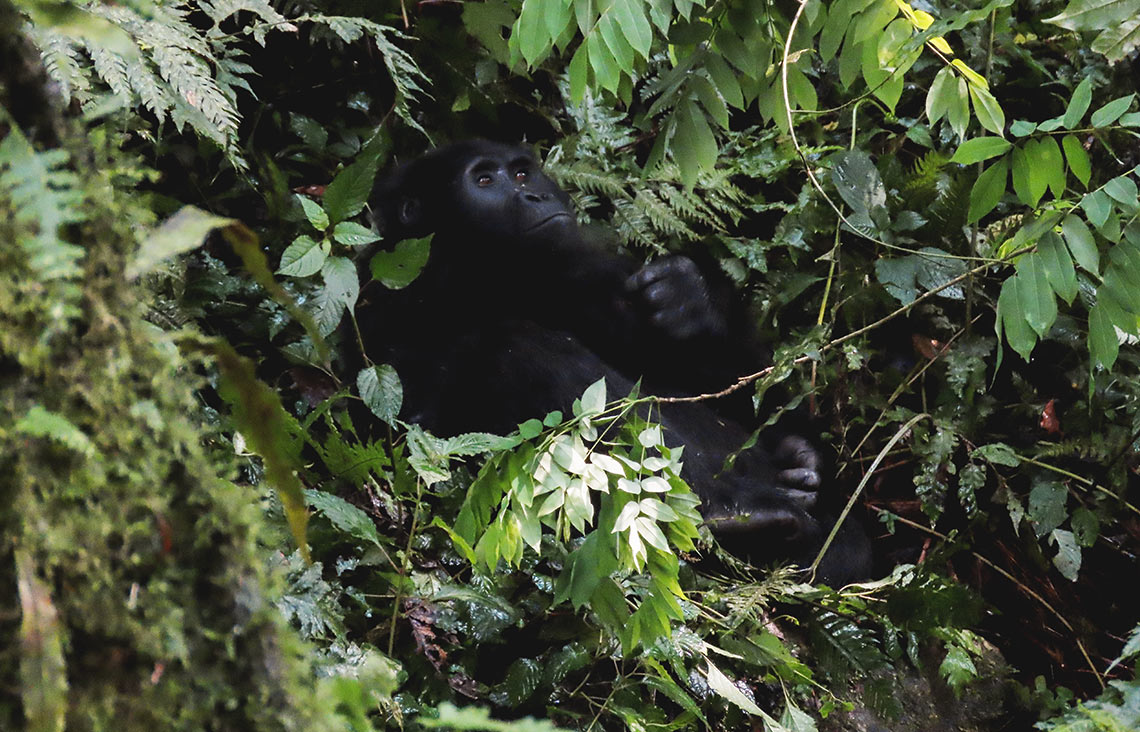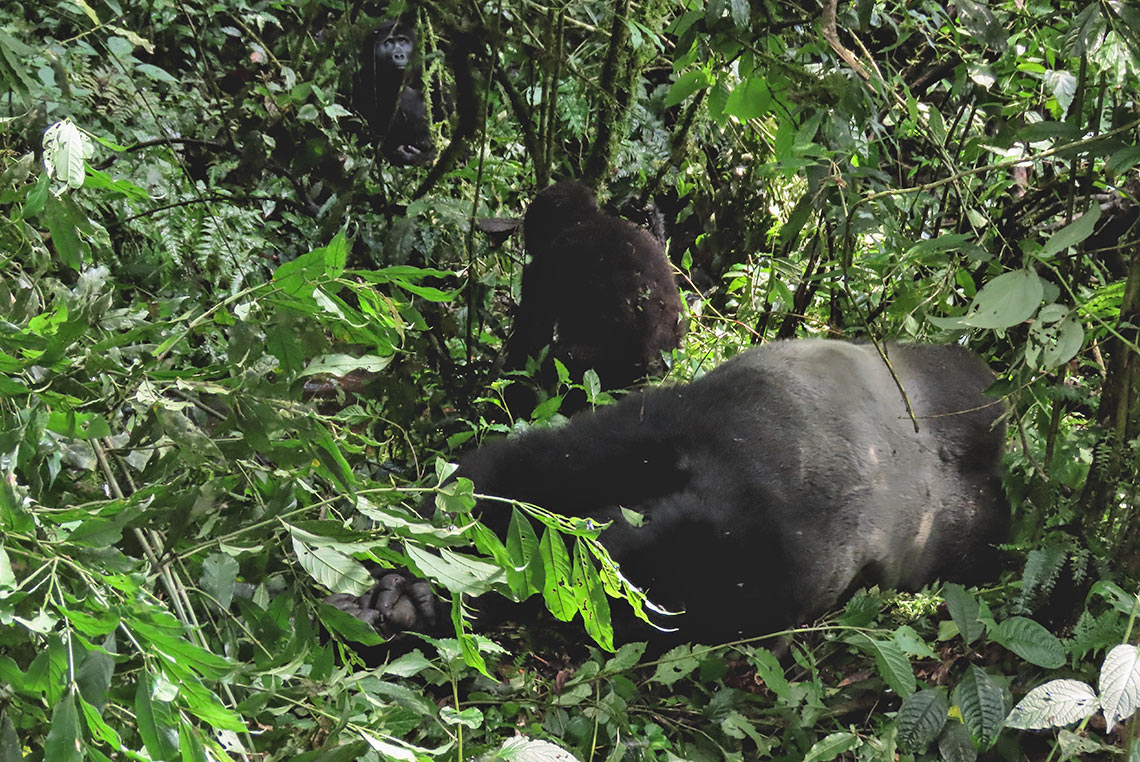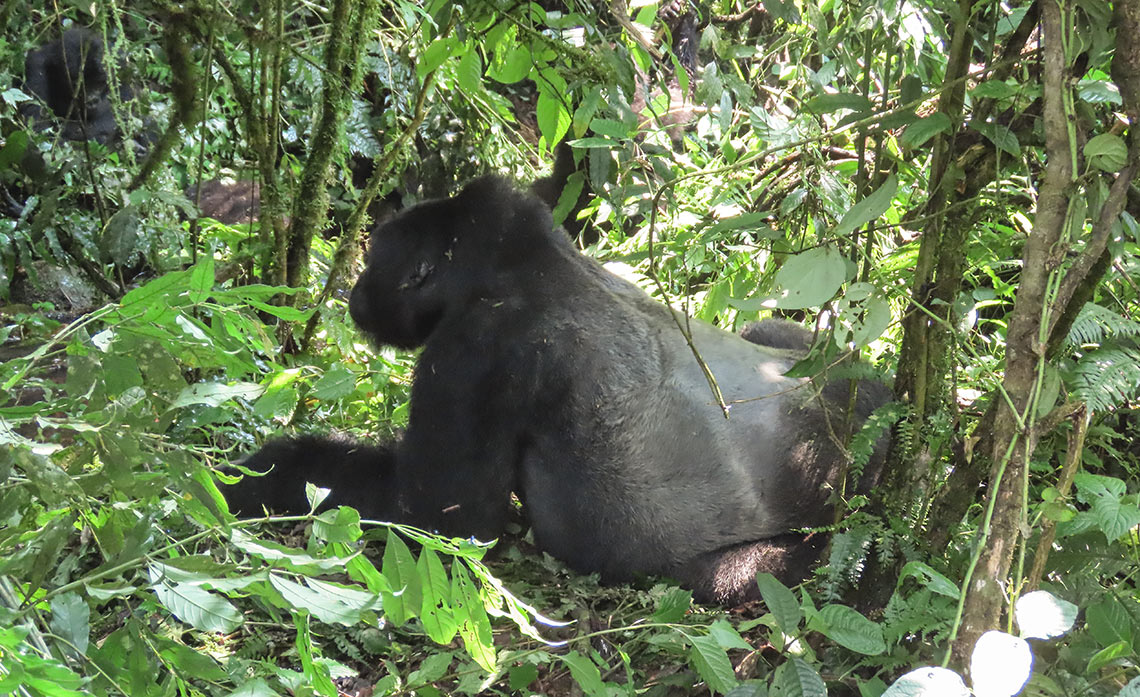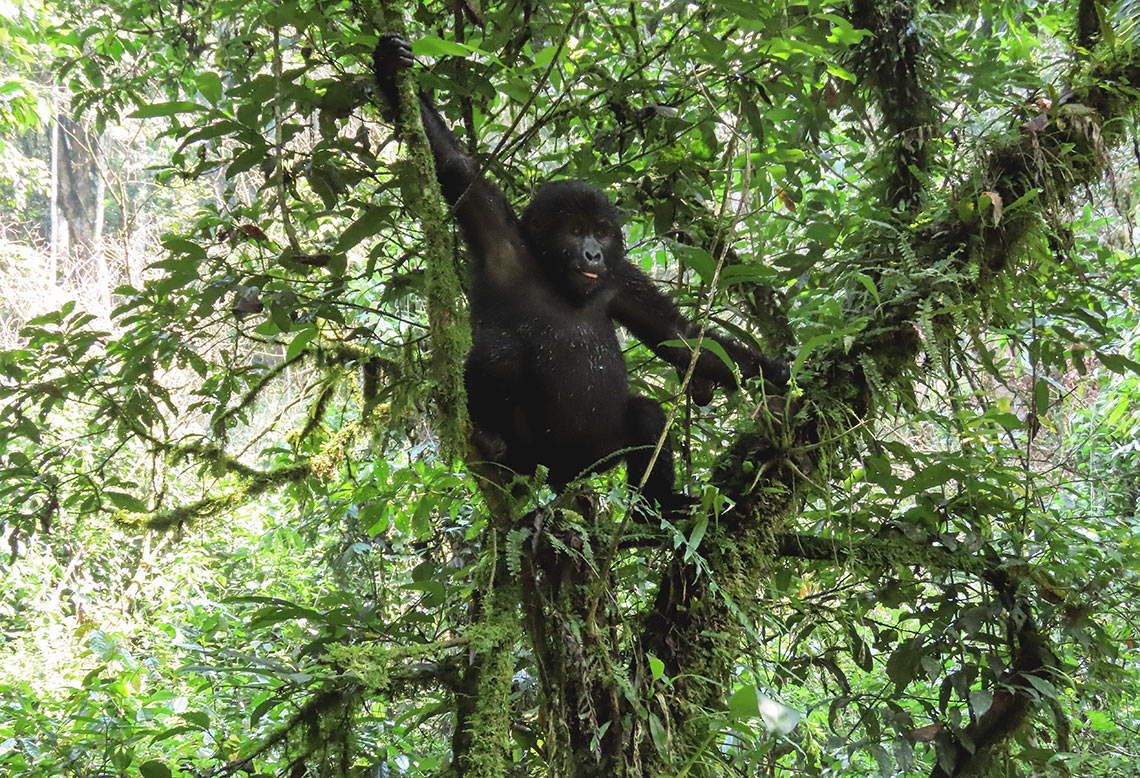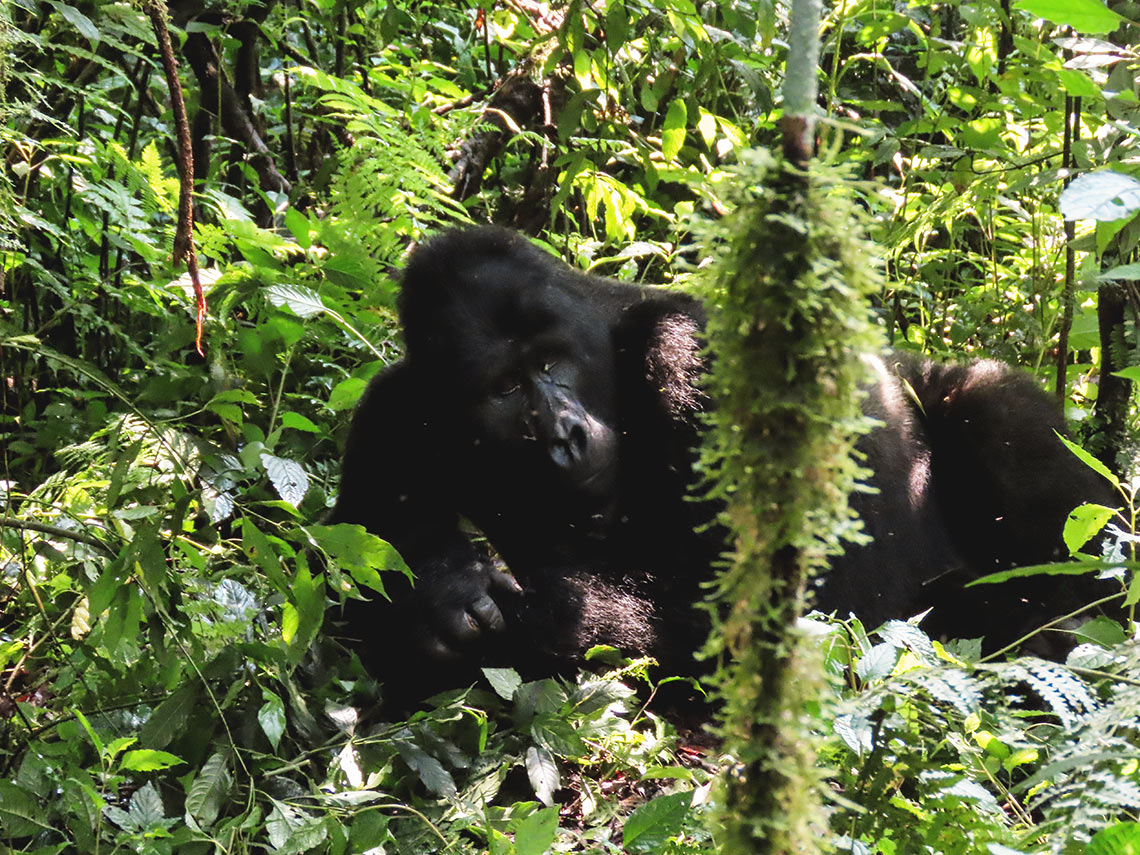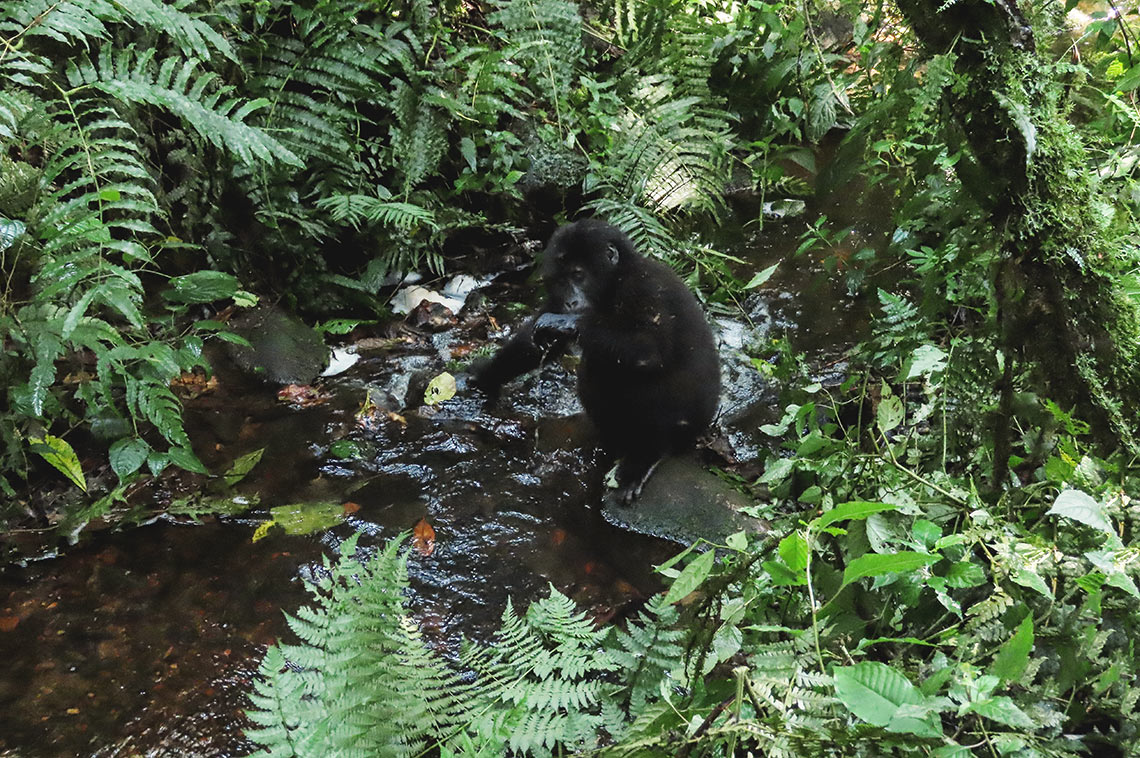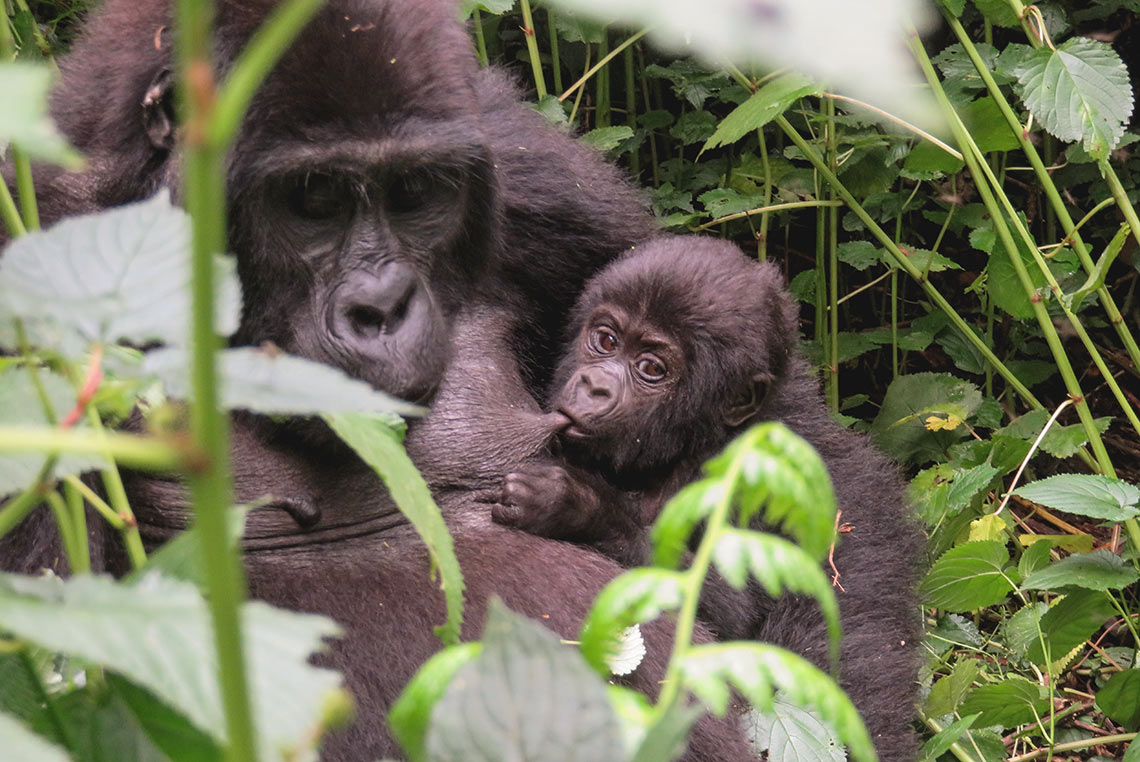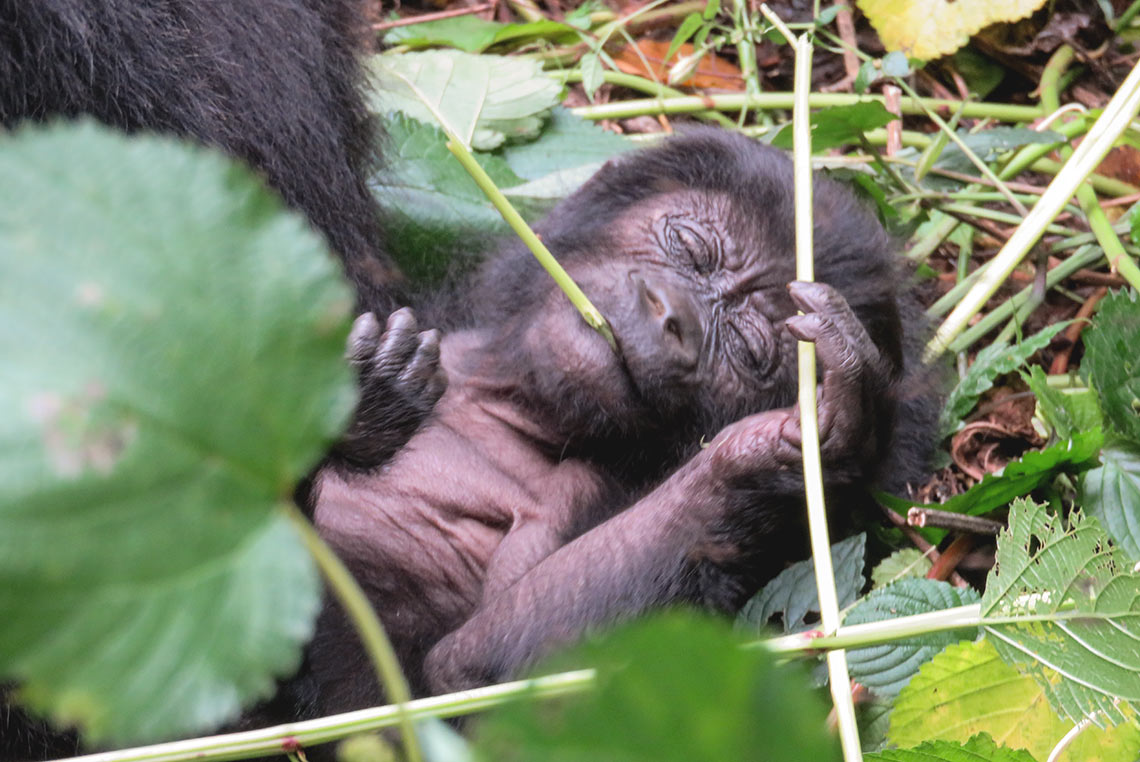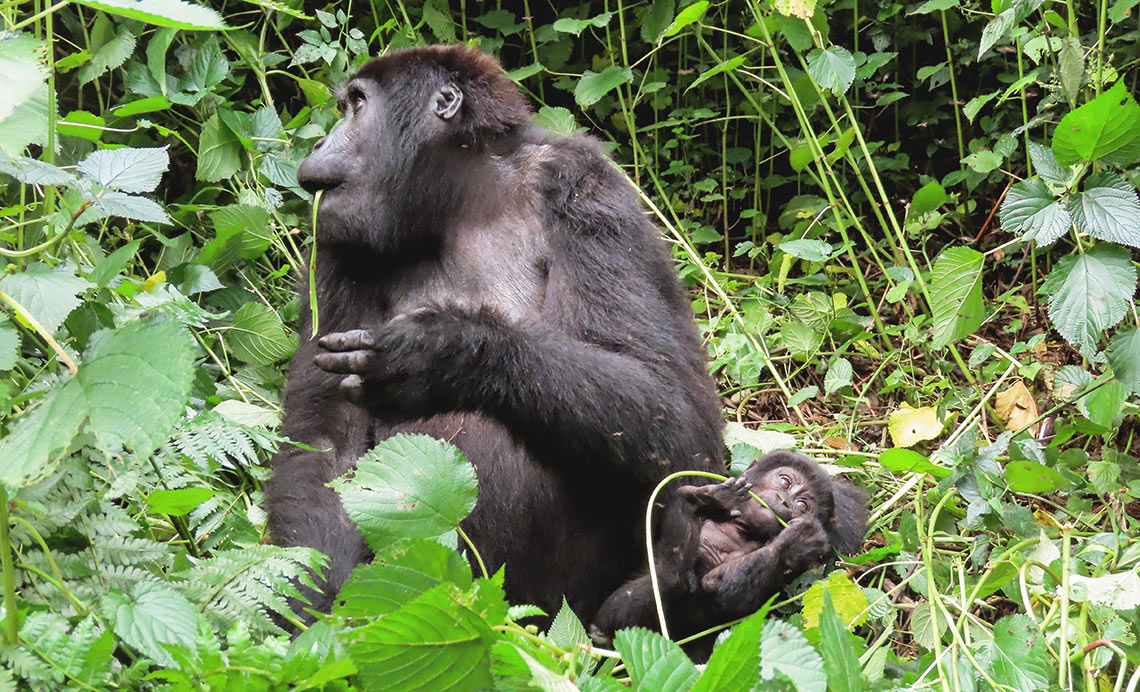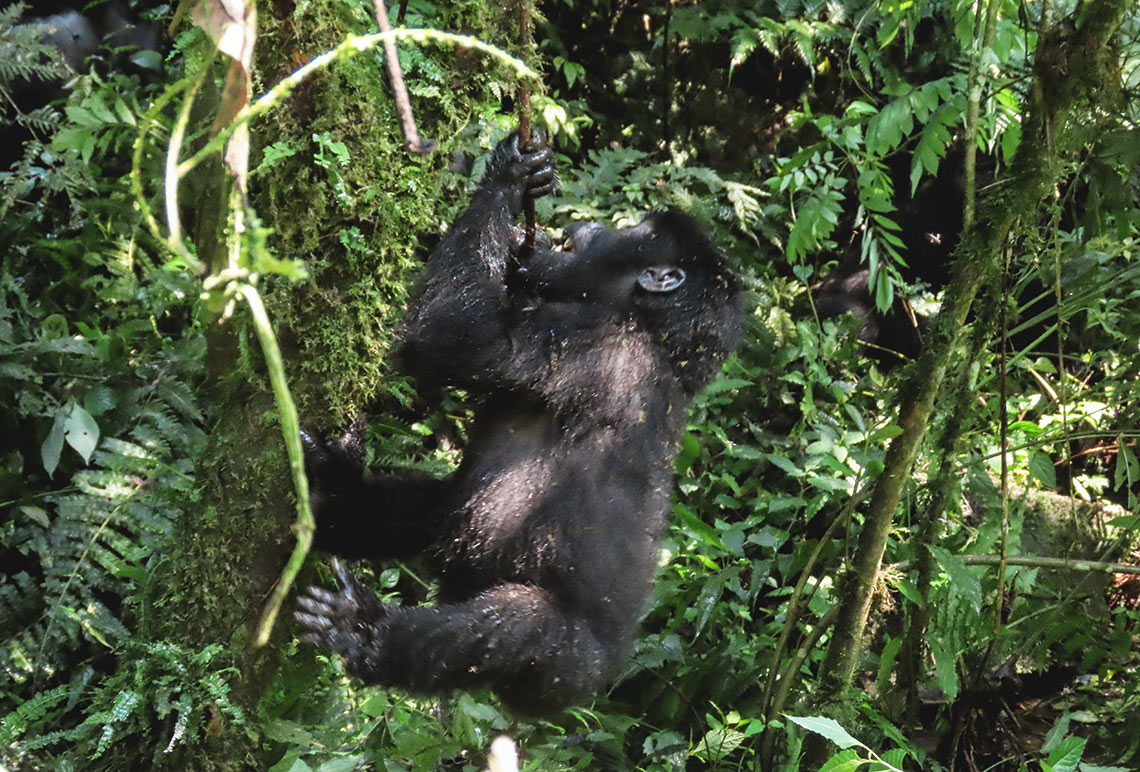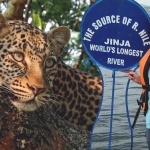An Experience Of A Lifetime With The Mountain Gorillas
After three hours of trekking upwards into the lush world of the protected national park, Dr Anne Small found herself face to face with the glorious mountain gorillas of Uganda – the highlight of her wishlist during her journey to Africa … from a seven-foot tall silverback to a young baby suckling its mother, this was an unforgettable experience for our Moonee Ponds MindBody Health Centre GP.
It has also cemented her determination to help share awareness for the vital necessity for humankind to look after the wildlife on our planet and support the dedicated work of organisations such as For The Love Of Wildlife – a Melbourne-based group taking global action for animals.
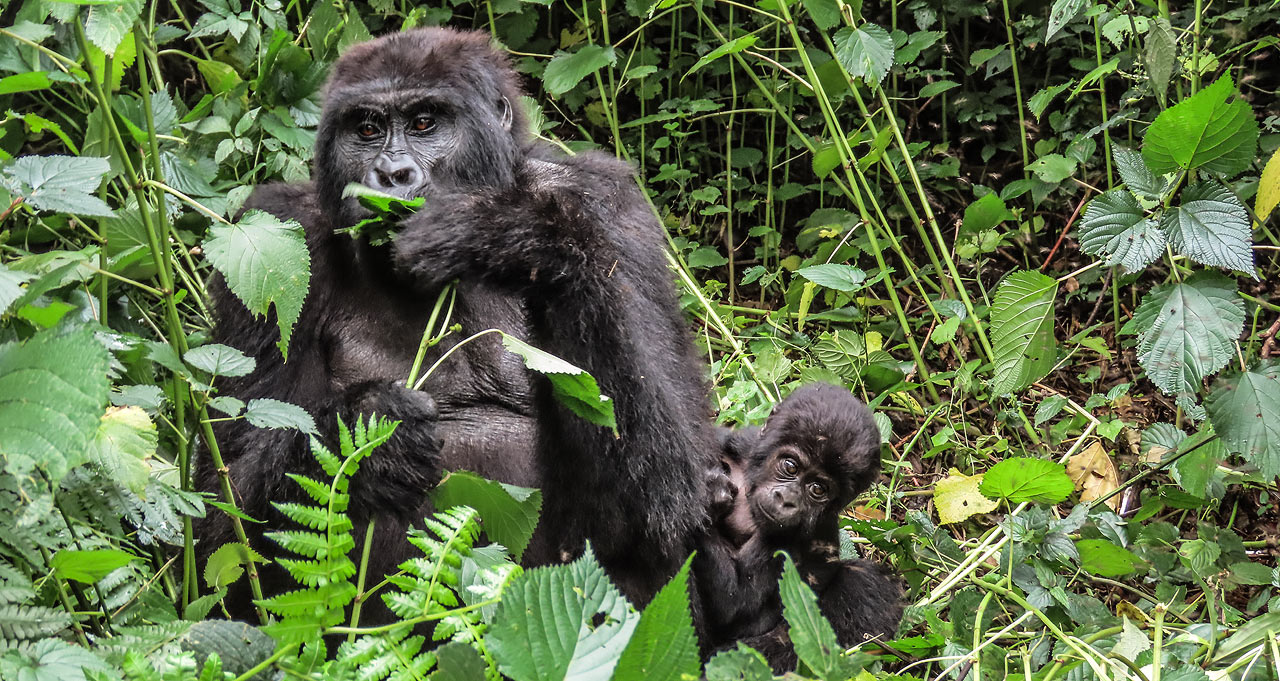
Dr Anne’s blog from Uganda: Our guide, Ben, informed us that the Mountain Gorilla Rehabilitation and Habituation Project started in 1991 when there were only a few hundred gorillas in the wild and their numbers were decreasing through poaching. It took 2 years, until 1993, for the first group to be habituated enough to allow tourists to visit them.
Thanks to the concerted efforts of the local communities, the Uganda and Rwandan governments, UNESCO and tourist visits, the Mountain Gorillas are no longer considered an endangered species. Ben said that there are now about 880 in the wild.
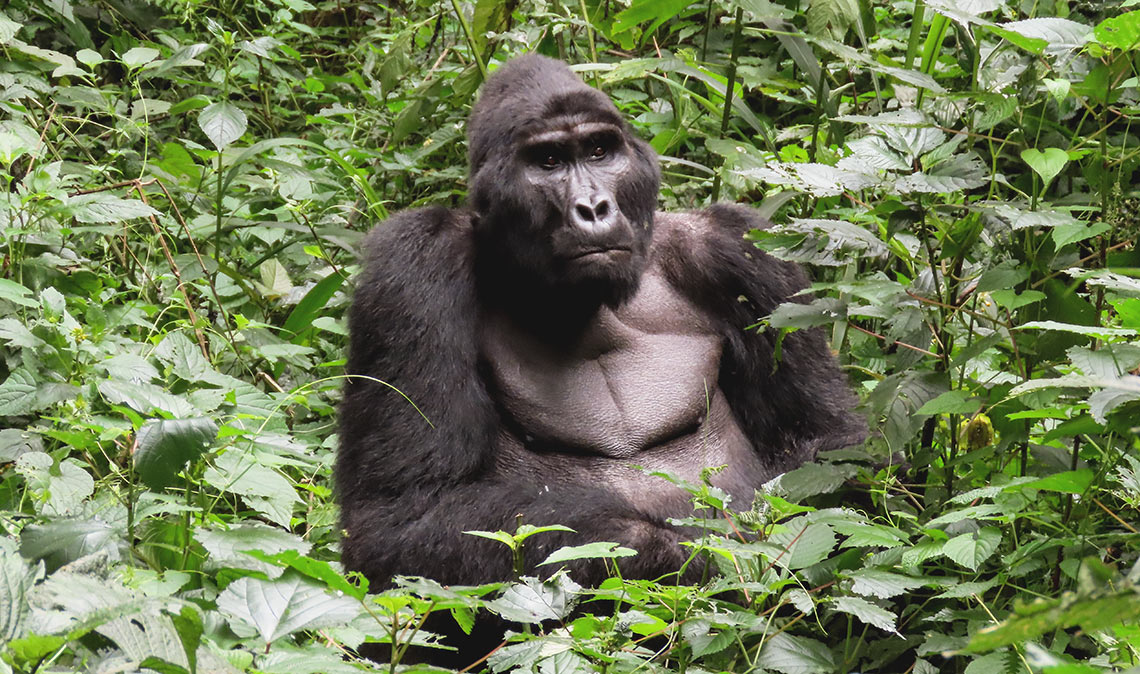
The habituation process is years long and complicated. First the gorillas need to get used to the trackers and then the guides. Only when the gorillas seem settled do the guides slowly introduce strangers / tourists. Each group of tourists is only 6-8 people and we could stay and observe the gorillas for only one hour. The trackers then stay behind after the tourists’ visit to ensure that the gorillas have not been disturbed or upset in any way.
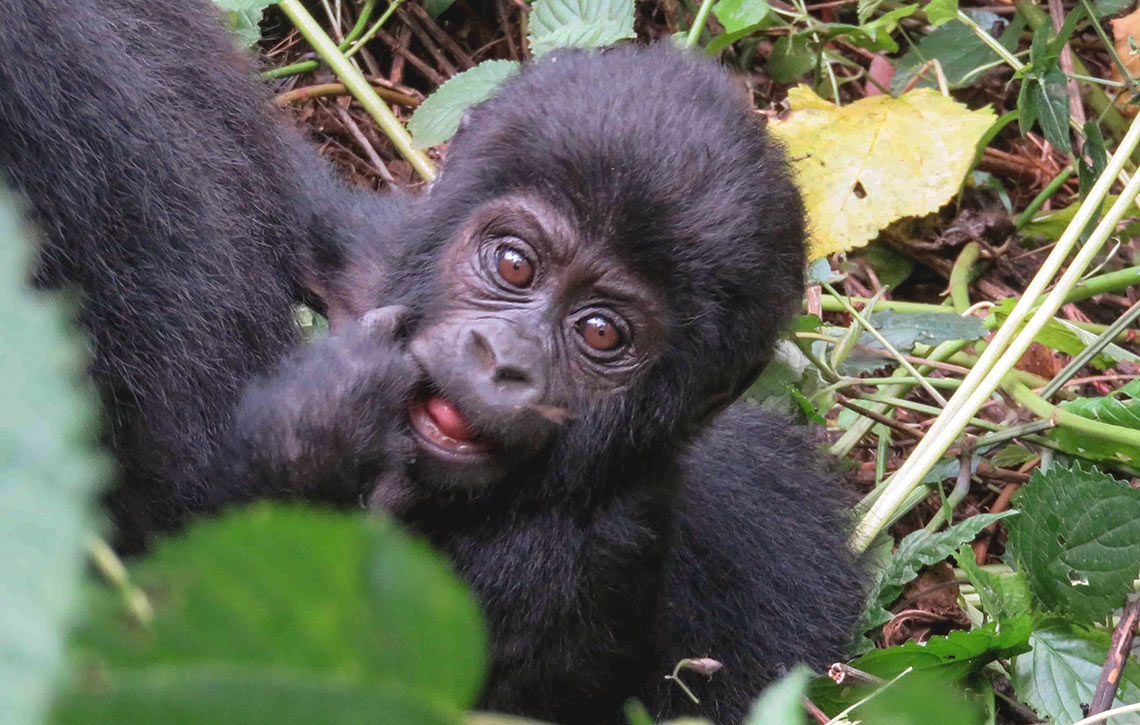
The trackers and guides communicate with the gorillas with short, sharp grunts! The tracker next to me said that the nearest gorilla to us was telling the other gorillas that the food was sweet! When the huge silverback gorilla seemed to get upset when we first interrupted his breakfast, two of the trackers softly grunted to him and he settled quickly.
The group I saw had a three-month old baby gorilla with – he is so cute! The silverback was huge, about 7 foot tall and they can weigh 1.5 tons. There were about 3 or 4 other gorillas munching on the foliage.
The trek up the mountain was tough – 3 hours up! The unsung heroes are the porters who carry your backpacks but more importantly pull and push you up the mountain. I didn’t attempt the trek on the second day, but my friend did so some of the photos and videos are hers – hope you enjoy them.
Seeing the gorillas was a very moving and memorable experience – a must if you visit Uganda.
For anyone interested in learning more about the mountain gorillas, the film ‘Virunga’ exposes the unscrupulous oil and gas industry in their efforts to kill the ‘monkeys’ so they can mine protected areas.
Dr Anne is an avid supporter of For The Love Of Wildlife (FLOW), founded by her friend Donalea Patman OAM, who is well aware of how the mountain gorillas have been impacted by the bush meat trade, hunting and loss of habitat.
Dr Anne is encouraging her blog readers to donate to For The Love Of Wildlife to assist in their goal to travel to Switzerland for a significant conference.
Donalea explains, “The legal trade in wildlife is worth US$320 billion a year and is monitored by a system that is currently unfit for purpose. Until the basics are fixed, it’s easy to launder illegal wildlife through the legal trade. For the Love of Wildlife and Nature Needs More are attending CITES Conference of Parties in Geneva in August with a proposal to modernise CITES. Formed in 1975 with 183 signatory countries, it has only had one review and that was 25 years ago. With more than 36,000 species listed and likely to be a million in a few years, we can no longer use a system that hasn’t been updated since the 1970s.”
All donations over $2 are tax deductible and are possible via PayPal, credit card or direct debit.
CLICK HERE TO DONATE
For more information about For The Love Of Wildlife’s incredible work, visit the website here www.fortheloveofwildlife.org.au





